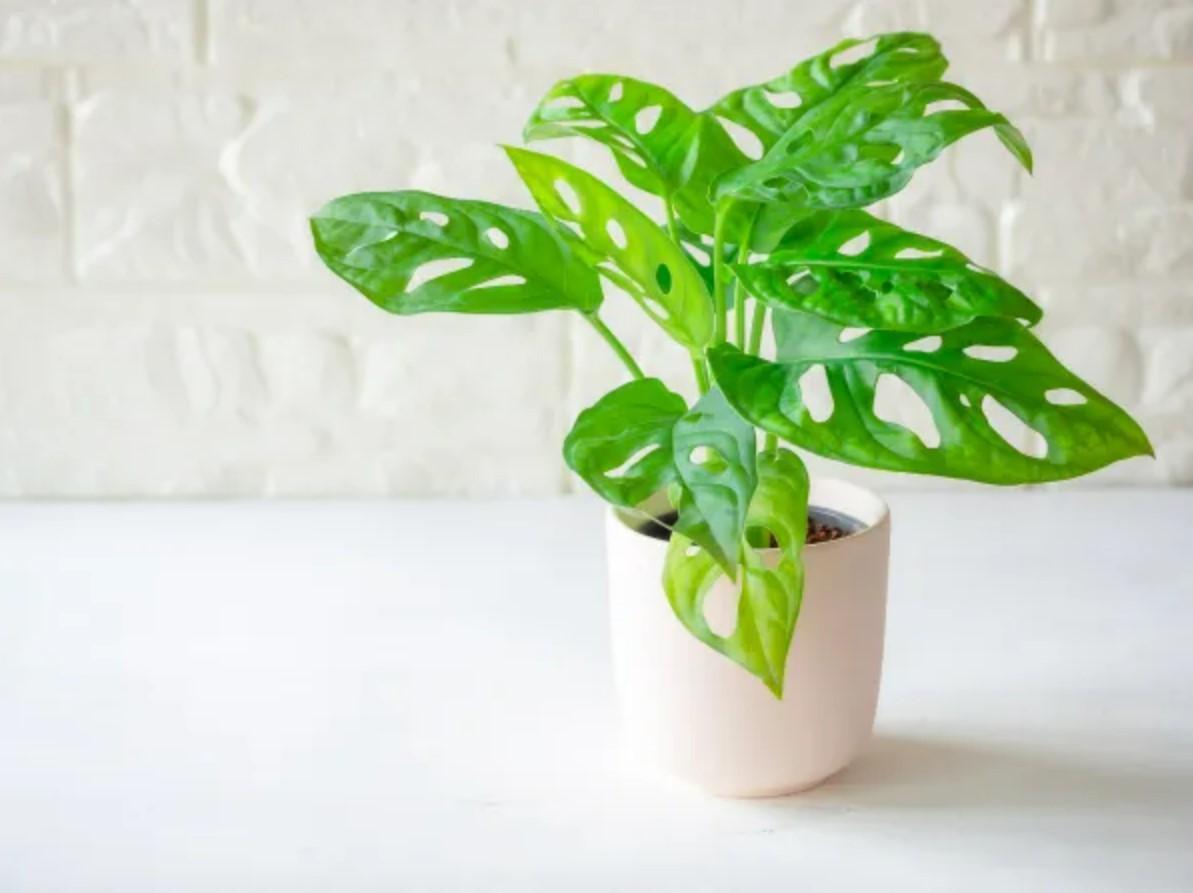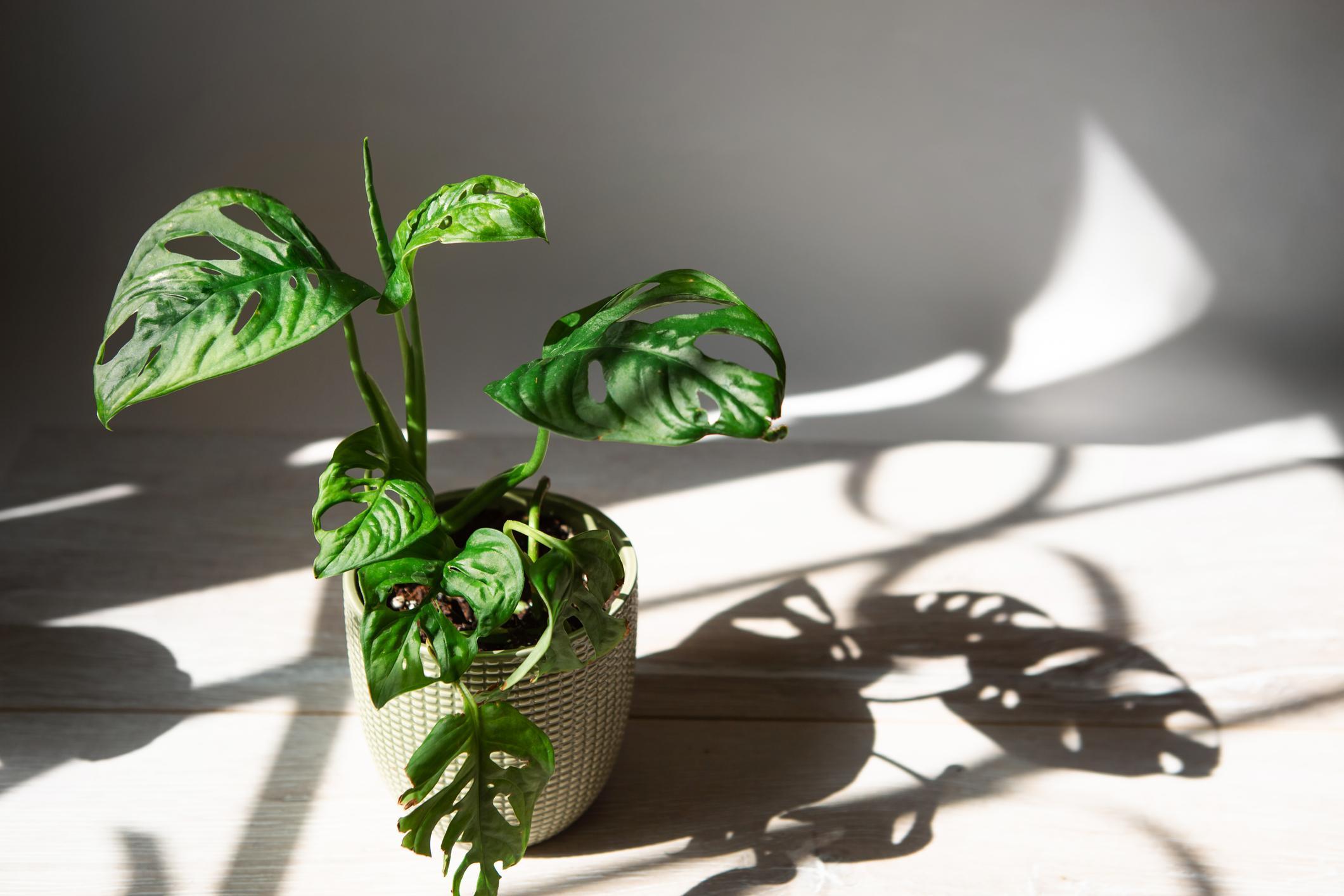Different Types of Monstera Plants


Monstera is a genus of plants that are most noted for their uniquely shaped leaves. These broad leaves have holes and gaps in them which give them an abnormal look, the reason for their taxonomic name. These holes are called fenestrae and have the function of distributing the amount of available light to as many leaves of the plant as possible. There are many individual species of monstera plants, although many are often confused with each other. This is partly due to the many hybrids and crosses that exist.
Although tropical plants, monstera plants are hardy and have been incorporated as houseplants across the world. At thedailyECO, we look at the 25 different types of monstera plants to see which ones might best suit your home. We provide names of each species, as well as photos to see the differences for yourself.
- Monstera deliciosa (Swiss-cheese plant)
- Monstera adansonii (Adanson's monstera)
- Monstera obliqua
- Monstera acuminata (shingle plant)
- Monstera punctulata
- Monstera tuberculata
- Monstera acacoyaguensis
- Monstera dubia
- Monstera siltepecana
- monstera lechleriana
- Monstera pittieri
- Other species of monstera
- How to care for all types of monstera plants
Monstera deliciosa (Swiss-cheese plant)
The taxonomic name of this type of monstera plant species (Monstera deliciosa) is due to its edible fruit which tastes similar to pineapple or banana when ripe. However, this fruit is toxic when unripe. The common name of the Swiss-cheese plant is due to the gaps in the leaves which are similar to the holes in the famous type of cheese. They are one of the largest species of monstera plants.
The leaves of the Swiss-cheese plant can be as long as 35"/90 cm, so it is best kept in open areas with a lot of space. They do require semi-shade, so they should not be left for long periods in direct sunlight. When developing, the leaves emerge complete, but the fenestrae holes appear over time. On the margins it is palmate or lobed, and has some holes close to the central venation. It is a climbing plant.

Monstera adansonii (Adanson's monstera)
As you can see in the photo below, this type of monstera plant has smaller leaves at first. Confyusingly, this type of monstera is also often known as a Swiss cheese plant. They are around 4"/10 cm when young, but can reach as much as 12"/30 cm when mature. It is a climber and the leaves are heart shaped with many medium-sized, round-shaped holes. These fenestrae appear as soon as the new leaf sprouts.
You can purchase your own Swiss cheese plant with the link below:

Monstera obliqua
Very similar to M. adansonii, but with much broader fenestrae. As one of the smallest types of monstera, it is a little more delicate than other species. Despite its size it has a high water demand and less need for light. It is native to Peru and is one of the most exotic, expensive and high-maintenance species of Monstera.

Monstera acuminata (shingle plant)
When it is juvenile it is also confused with M. adansonii, but shingle plants have a greater number of leaves. These leaves are smaller and have more elongated fenestrae. They are also shinier with an almost waxy texture. The plant climbs trees and reaches to 158'/4 m. When it reaches this length, it begins to develop large, non-lobed leaves with internal fenestrae. There is also a variety of variegated Monstera acuminata.

Monstera punctulata
One of the largest of the different types of monstera plants, its leaves can measure up to 47"/120 cm in length. They have large elongated holes. When they are juveniles they live on the ground and when they mature they climb large trees (see photo below). This climbing ability is thanks to the position of the petiole which is orientated upwards instead of outwards. This causes the leaves to overlap against each other, providing a lot of cover. To increase coverage, it is capable of developing irregular leaves.

Monstera tuberculata
It is similar to M. punctulata in that it grows tightly up tree trunks when mature. Unlike most other types of monstera plants, it lacks holes or fenestrae. This can lead to confusion with plants of another genus, such as Philodendron. You can see the intact leaves of this tyoe of monstera in the photo below.

Monstera acacoyaguensis
It has large leaves where the margin remains complete without gaps. The holes are contained within the leaf itself. it has relatively round fenestrae that appear as the plant matures. It is not as common as a type of ornamental plant. The leaves are glossy and can be up to 20"/50 cm long.

Monstera dubia
When it is juvenile, it does not have fenestrae. Only when it matures do holes form. This means the monstera in the photo below is a juvenile plant. It is peculiar in that the slightly rounded leaves have a grayish coloration pattern, as opposed to the typical green in this genus. In addition, the leaves adhere to the trunk of the trees or to the attached branch.

Monstera siltepecana
Like M. dubia, the leaves develop a grayish coloration on the surface, but it differs in that the leaves are spear- shaped (lanceolate). Due to the gray color, the venations are more visible and contrasting. When mature it becomes a climber and develops a few small holes. The photo below is of a younger plant.

monstera lechleriana
It is another of the largest different types of monstera plant species, but it is considered quite rare. Juvenile leaves have few or no fenestrae. When they do, these openings are almost circular in shape. When mature, the holes open up as shown in the photo below. The plant is considered so rare than clippings can go for a lot of money on various gardening marketplaces.

Monstera pittieri
It is native to Central America and the leaves have the entire margin not torn, with fenestrae either present or absent. Juveniles cling tightly to the substrate but when mature they cling to trees. The peduncle is short and about 1.5"/4 cm in length.

Other species of monstera
Although we won't lost them all, there are around 60 officially recognized species of monstera plants. We provide some more of them here:
- Monstera alcirana
- Monstera aureopinnata
- Monstera boliviana
- Monstera cenepensis
- Monstera dissecta
- Monstera epipremnoides
- Monstera filamentosa
- Monstera florescanoana
- Monstera guzmanjacobiae
- Monstera limitaris
- Monstera membranacea
- Monstera monteverdensis
- Monstera subpinnata
- Monstera tacanaensis
How to care for all types of monstera plants
Despite the differences in individual species, each monstera plant requires similar types of care. This is mainly due to the fact they have similar natural habitats which are tropical in origin. The following are some tips on how to care for the different types of monstera plants:
- Monstera plants thrive in low-light conditions, whether semi-shade, filtered light or shade with a little light.
- They have a medium demand for water, making it necessary for the substratum to remain moist to the touch, but not waterlogged. Spraying the leaves with an atomizer from time to time to promote good levels of environmental humidity is recommend. Generally speaking, they need to be watered once a week.
- Requires a substrate that does not soak up water, meaning the soil requires good drainage. We can achieve this with a mixture of equal parts of worm humus, peat or black earth, as well as volcanic gravel or a similar draining porous material. Learn how to make your own earthworm castings at home.
- Requires warm temperatures.
- Every 6 months a top layer of worm castings can be applied as a mulch to provide additional nutrients for growth.
Now that you have discovered all these fascinating types of Monstera, you might want to see what other options you have for your home. We provide some ideas with our articles on the best aromatic indoor plants and the best white flower plants for the home.
If you want to read similar articles to Different Types of Monstera Plants, we recommend you visit our Decorative plants category.
- Cook, S. (2016). The Forest of the Lacandon Maya: An Ethnobotanical Guide. Canada: Springer.
- West-Eberhard, M. (2003). Developmental Plasticity and Evolution. UK: Oxford University Press.
- Enciclovida, Mexican National Commission for the Knowledge and use of Biodiversity. (n.d.) Monstera.
















